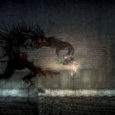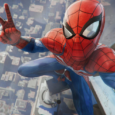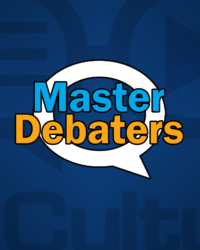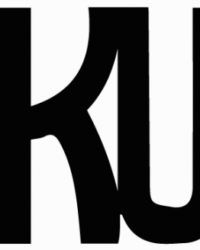Kingdom Hearts was a radical idea when it was first introduced—nobody had ever thought to pair Disney worlds with Square Enix characters in a platformer setting. Since then, it’s become a staple for Disney games, and one of the most well-known Square Enix series. For full disclosure, I love Kingdom Hearts. I’ve played every game since the inception of the series and I consider it to be one of my top five favorite franchises. That being said, I can recognize when the games are lackluster, and I’m more than willing to point those out. Yes, every Kingdom Hearts game on a Nintendo console has been a snore fest with less-than-stellar controls, odd battle mechanics, or a convoluted story. After three titles from GBA to DS, Kingdom Hearts makes the jump to Nintendo’s latest platform with Kingdom Hearts: Dream Drop Distance (3D). Has the new console inspired higher game quality, or is this yet another title most fans of the series would tell their friends to pass on?
A hallmark of the Kingdom Hearts series is its unlikely mashup of Disney and Square-Enix. Though much of that is preserved in this game, they seem to have dropped the ball more than usual. There are exactly 5 Square-Enix characters present, all of them in Traverse Town, and all of them from The World Ends With You. Though I’m elated that there are new Square-Enix characters, I’m disappointed that there are so few— I actually enjoy seeing those characters more than the Disney characters. They make up for it in the fact that almost all of the worlds are new, from the Hunchback of Notre-Dame to the Three Musketeers to Fantasia. New Disney worlds are just pouring out of this game, though that is made slightly bittersweet by the fact that Donald and Goofy are not by your side, the developers choosing instead to allow you to have nice versions of the Dream Eaters. I will admit that the new sidekicks are cuter though.
The story of Kingdom Hearts, throughout the series, has grown from playful and interesting into a monstrously complex tale. First there were Heartless, then the Nobodies were added and that was fine, but there were also special Nobodies (which was okay too) then bugs in the datascape (well I guess that’s what would be there, yeah) and Unversed (wait what?), and now a new breed of enemy are introduced called Dream Eaters (that’s it, I need a spiral notebook). When there was just one keyblade wielder, now there are multiple, so many that they actually had a gigantic war some time ago and there’s one evil guy who must share a mother with Ganon because he can’t die. Not to mention people trapped inside one another’s hearts and sleeping worlds, but others were locked away while some were transformed and who even knows what the special Nobodies are all about and sigh…
You get my point. This story is Complicated, proper title. Dream Drop Distance only exacerbates the problem by adding in a new realm of worlds, a new type of monsters, and a few retcons to the story. Sure, they give you summaries of each game, but that’s like reading the Spark Notes of the history of the entire world and expecting to understand it. Hardcore fans of the series will find this title necessary, considering it’s rumored to be the last game before Kingdom Hearts III, and the ending says as much as well. If you have decided to hop into the Kingdom Hearts series, or have missed out on some games, you’ll either need to read up on the internet, watch some cut scenes, or have a diehard fan explain it all to you because it’s absolutely 100% necessary to understand why you’re doing what you’re doing. If you care not about motivation, then you wasted your time by reading the previous two paragraphs and for that, I am sorry. This next one is for you though.
The combat in this game is remarkably fluid, thanks in no small part to the Flowmotion system. It’s difficult to describe it without a visual reference, so here is a demo of it:
http://www.youtube.com/watch?v=qLkX_QXNGxo
Now, with just the press of a button, you can kick off of buildings, grind rails and ropes, execute powerful combat moves, and reach unattainable areas. The system integrates seamlessly with combat and it soon becomes something you rely upon quite often as it’s generally faster and more powerful than your standard attacks. Whereas in previous KH games, you’d be spamming the attack button, hoping to win in the end, this will have you looking for terrain to jump off of, poles to swing on, and special moves to execute to kill your enemies faster. Not only does this system make combat more fun, but it also engages the player more. I know there were more than a few times in which I zoned out in KH fights until I had won, but with this game, I’m constantly strategizing and trying to find more powerful moves. The only bad thing about it is that it seems the game was designed before the system was implemented, because there are so many objects and items to help you jump higher or farther, but with Flowmotion, you can jump infinitely high as long as you have a wall, and there’s no gap in the game too big to air surf across.
In addition to the new Flowmotion system, Flick Rush is a new minigame added to KH which allows you to pit your spirits against others in an arena. This game essentially replaces the Olympus Coliseum from previous titles with a game that requires a bit more strategy. You send three spirits into the ring to do battle against three other spirits. Cards for each spirit are distributed and have either attacks or support magic on them along with a number. If the number of the combined cards you play on the field is greater than that of your opponent, you cancel out their attack and do your own. If they are equal, you duel against each other and try to match three slot machine-esque symbols. Though it’s certainly an add-on meant to extend gameplay, it is no less fun and entertaining. The battles are intense, the strategy is intriguing, and it’s every bit as satisfying to win as it was in Olympus.
The art in this game looks about as good as Kingdom Hearts: Birth by Sleep on the PSP, and sometimes surpasses it. Specifically, just the facial rendering of the characters from Tron: Legacy is surprisingly accurate especially considering that it’s a handheld console.
The 3D in the game is what you would expect from a 3DS title, namely that there are a few instances in which it’s really noticeable and cool, but most will prefer to have the 3D off. Even so, this looks to be one of the best looking games on 3DS to date, not only because of the hardware, but also because of the colorful backgrounds, and smooth animations.
A problem KH: 3D suffers from is the camera. Since there’s only one circle pad, it’s up to AI or shoulder buttons to control the camera, and it can be quite frustrating. I often found myself trying to turn the camera, only to end up in a worse spot than before, or get the camera to where I like it, only to have it snap back to the exact position I was just in. The quick solution for this is to get a circle pad pro, though that’s an extra $20 plus battery investment to solve a mildly annoying problem.
Verdict: The bottom line is that if you’re a KH fan, you’ll enjoy this game. It has its problems, but it’s still marginally better than the other Nintendo Kingdom Hearts titles and rivals Birth by Sleep in gameplay, even if the story is a convoluted mess. If you’re looking to jump in to the series, I wouldn’t recommend starting with this one, but if you can handle some confusion and accepting high level facts without need of explanations, you could do worse than Dream Drop Distance. Play this game (and the whole series while you’re at it) if you like platformer adventure games, intriguing and fun storylines, or just want to hang out in some Disney worlds without having to be in Florida.
For more AristoGamer reviews, check out our website at http://www.aristogamer.net





















